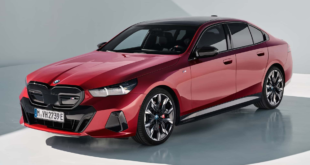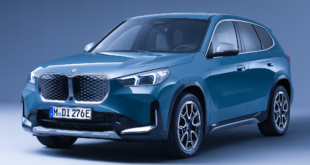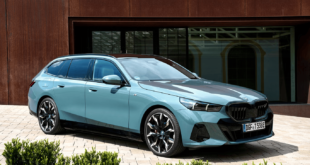In the BMW iX5 Hydrogen workshop in Antwerp, BMWBLOG had the great opportunity to recently sit down with Dr. Juergen Guldner, Head of BMW Hydrogen Fuel Cell Technology. He provided us a detailed explanation of the iX5 Hydrogen powertrain’s operation. You no longer need to wonder how a fuel cell hydrogen car operates.
Dr. Guldner begins by outlining the advantages of hydrogen-powered vehicles over electric ones. The only change is in how the energy is stored, yet you’ll still experience quick acceleration and quiet driving. He next draws our attention to the two hydrogen tanks with carbon fiber walls typically found in the centre of the automobile. They store roughly six kilos (13.2 pounds) of hydrogen in total, which enables a range of about 500 kilometers (300 miles).
Using water as a byproduct (or “exhaust”), hydrogen is transformed to energy in the fuel cell. You ask how? The fuel cell housing receives oxygen through an intake and compressor. A catalyst layer within the fuel cells splits hydrogen into protons and electrons. therefore there is electricity. The electron leaves the vehicle and returns, this time in a different area, where it joins an oxygen atom to create water, the sole result of this process. It then leaves via the exhaust pipe. Yet, heat is also considered to be a result of the process. According to Juergen, the iX5 may utilise this heat in the cold to avoid range loss. It functions like how preconditioning does in a fully electric car.
The excellent tour by Dr. Guldner highlights how straightforward the parts are. The electric motor is identical to the one in the iX. Despite the complexity of hydrogen cells, the process itself is well-known. “The intake manifold is where air enters the system, and as you can see, all of those parts are highly similar to those found in combustion engines. Since they know how to use them, the conventional supply business is quite interested in these components, the expert claims. Last but not least, even though he doesn’t say it, I’d assume that the DC/DC converter utilized is a copy of the 48-volt hybrid system, which is currently widely used. But who knows?
The above video is worth watching for ten minutes if you want to understand more about the iX5 Hydrogen engine.
 BMW.SG | BMW Singapore Owners Community The Ultimate BMW Community – Established Since 2001
BMW.SG | BMW Singapore Owners Community The Ultimate BMW Community – Established Since 2001













